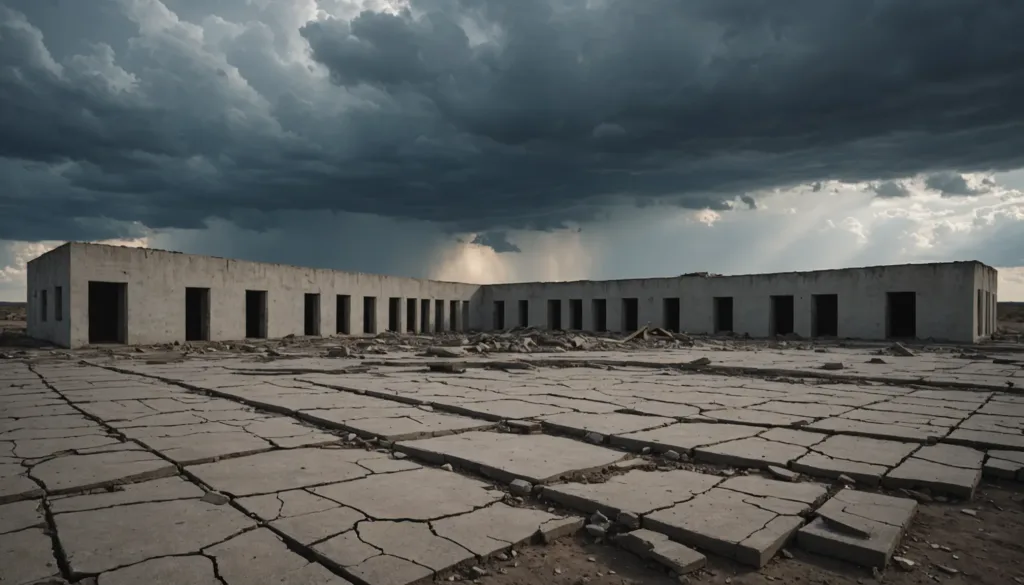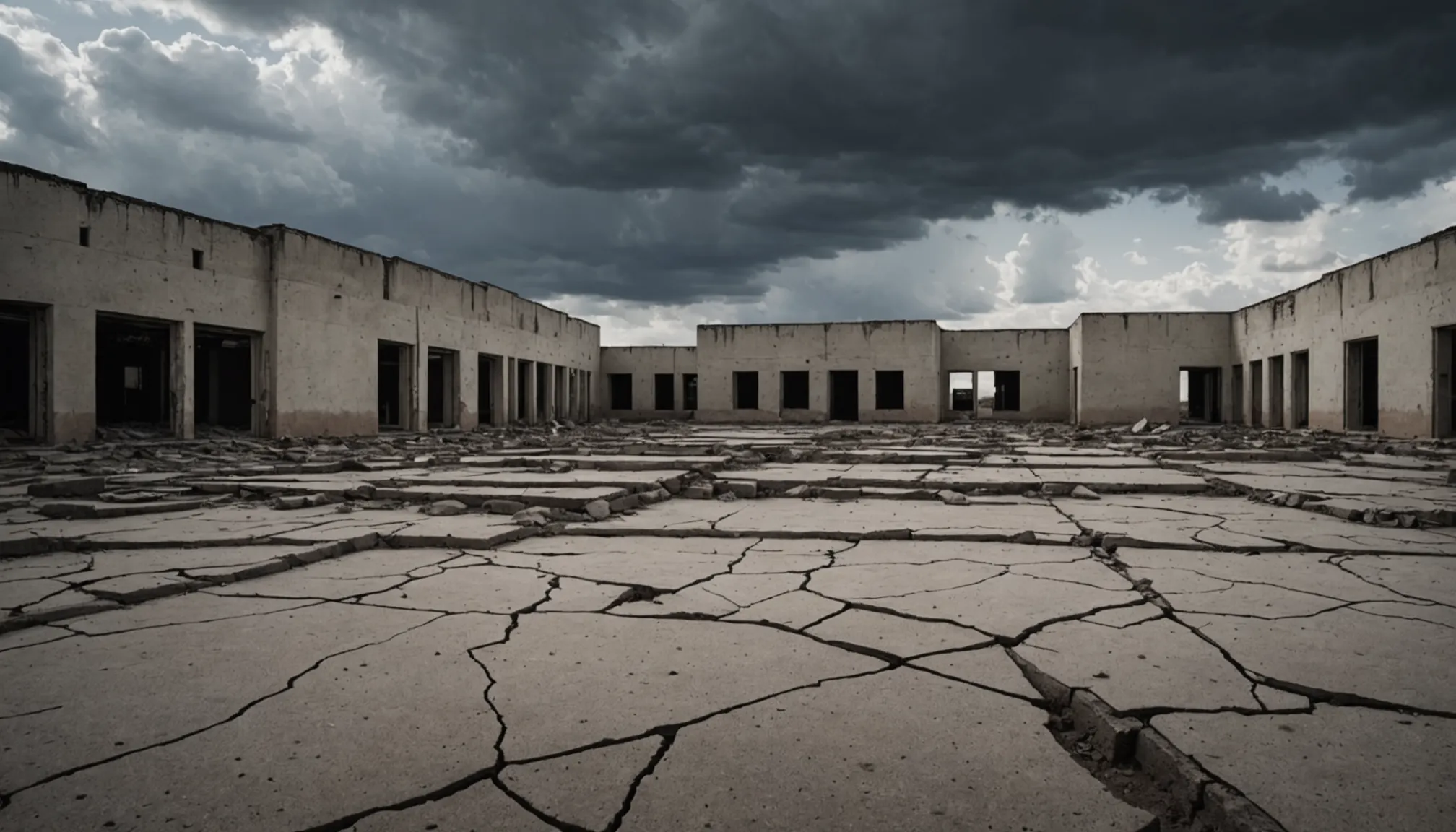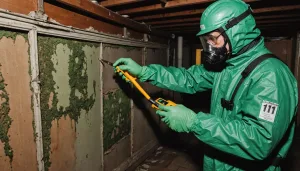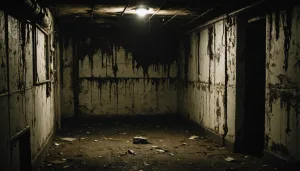After a storm, assessing structural damage is a critical first step to ensure the safety of your home and family. It’s essential to conduct a thorough inspection to understand the extent of the damage and prioritize necessary repairs. Begin by examining the exterior of your home, looking for visible signs of structural compromises such as cracks in the foundation, leaning walls, or damaged roofs. Pay close attention to any displaced or scattered debris, as it often provides clues about areas that have been impacted.
Next, move to a detailed interior inspection. Look for water stains on ceilings and walls, as these could be indicators of a compromised roof or leaks in the upper structure. Be cautious of sagging ceilings or warped flooring, both of which can suggest severe underlying issues. During your inspection, ensure you are equipped with proper safety gear, including gloves, sturdy boots, and a hard hat, to protect against unforeseen hazards.
Utilize a structured approach to assess damage more accurately. The table below outlines potential areas of concern and the type of damage to check for in each:
| Area | Type of Damage |
| Roof | Missing shingles, punctured sheathing, leaks |
| Foundation | Cracks or settling, water seepage |
| Windows and Doors | Broken glass, damaged frames, seal integrity loss |
| Walls | Buckling, water stains, cracks |
| Garage | Structural integrity of doors, frame damage |
Additionally, checking for storm damage requires keen attention to both visible and hidden threats. For example, mold growth can be a significant issue following water intrusion, but it’s not always immediately visible. Specialized equipment like moisture meters can help identify hidden wet spots that could lead to mold if not addressed promptly. In the aftermath of a significant storm, it may be necessary to engage with professional home restoration services to conduct a more in-depth evaluation and facilitate repairs.
Aside from identification, keep track of all damages by documenting them with photographs. This documentation will be invaluable when contacting your insurance company to file a claim. Understanding the extent of damage, coupled with the right safety tips, will guide proactive measures to prevent further deterioration and protect your home’s integrity.
- Always prioritize your safety and never attempt to climb onto roofs or enter severely damaged areas without professional assistance.
- Contact a structural engineer if you suspect any major structural damage that could pose ongoing risks.
- Review your home’s structural health regularly and maintain a record of repairs and assessments to facilitate future evaluations.
Securing your home from further harm
Once you’ve assessed the initial structural damage, it’s crucial to take action to prevent further harm to your home. Following a storm, homes are vulnerable to additional damage, whether from the elements or other factors such as vandalism. Here’s a step-by-step guide on how to secure your home effectively:
- Cover Openings:
- Use tarps or weatherproof materials to cover any holes or exposed areas on your roof. Make sure they are securely fastened to withstand wind and rain.
- For broken windows, apply plywood boards to cover the openings. This not only prevents water from entering but also acts as a deterrent against potential break-ins.
- Secure Loose Objects:
- Check around the exterior of your home and safely retrieve or secure any loose items such as garden furniture, grills, or decorations. These items can become projectiles with strong winds, causing further damage.
- Tie down or store any unstable structures such as sheds or gazebos that might have been moved or compromised during the storm.
- Inspect and Protect Utilities:
- If possible, shut off electricity, gas, and water if you suspect any leakage or electrical hazard. This is one of the safety tips that’s crucial for your well-being.
- Contact utility companies to report damages and request urgent repairs or guidance to prevent accidents or further complications.
- Install sump pumps if necessary to deal with minor water intrusions, especially in basements or lower levels.
- Prevent Mold and Mildew:
- Remove any standing water and use mops, towels, or wet/dry vacuums to dry surfaces as soon as possible. Mold can develop quickly in damp environments.
- Ventilate by opening windows and doors, weather permitting, and utilize fans or dehumidifiers to speed up the drying process.
- Engage Home Restoration Services:
- Consider employing professional services to handle large-scale repairs and restoration processes. They can ensure that your home is restored safely and thoroughly by using specialized tools and techniques.
- Professional services are adept at identifying potential long-term issues that untrained eyes may miss, such as hidden structural weaknesses or foundational cracks.
- Secure Important Documents:
- Gather essential documents such as insurance papers, identification, and financial records, and store them in a waterproof and fireproof container.
- Consider digitalizing essential information to create a backup that’s easily accessible even if physical documents are damaged.
Taking these steps not only helps mitigate further storm damage but also facilitates more straightforward claims and repairs. Proactive measures are vital in maintaining the safety of your home and ensuring that the storm’s aftermath is managed efficiently.
Handling water intrusion and flooding
In the wake of a storm, water intrusion and flooding pose significant risks to your property and health, requiring immediate and effective action. When dealing with water invasion, it’s crucial to approach the situation with both caution and urgency to minimize damage and prevent long-term hazards.
First and foremost, identify the source of water intrusion. This could be from a damaged roof, broken windows, or compromised walls. Assess the extent of the flooding carefully, ensuring you prioritize areas where water accumulation is most severe, such as basements or lower levels. Once the source is identified, promptly work to stem the flow of water using buckets or towels, and if the situation is safe, turn off the main water supply to prevent further leakage.
Address standing water as soon as possible. Standing water not only weakens the structural integrity of your home but also creates a perfect environment for mold growth, exacerbating the damage over time. Utilizing wet/dry vacuums or pumps can significantly expedite the removal of water. It’s also beneficial to use absorbent materials like sponges and mops to help soak up smaller puddles, focusing on corners and crevices often missed during initial clean-up efforts.
Once the water is removed, it's essential to dry out the affected areas thoroughly. Open windows and doors to improve air circulation, and harness the power of fans and dehumidifiers to extract moisture from the air. This step is critical as moisture that remains trapped in walls, floors, or furniture can lead to mold, mildew, and even structural decay if not treated promptly.
Simultaneously, assess any items or materials that may have been damaged beyond repair. Carpets, insulation, and drywall are particularly vulnerable to water damage and might need to be removed if they have absorbed significant moisture. Dispose of these materials responsibly, following local regulations regarding waste disposal. Actively document all damaged belongings, materials, and surfaces with photographs and detailed notes, as this information will be invaluable when filing an insurance claim.
Additionally, preventive measures should be taken into consideration to protect your home from equivalent future events. Consider investing in proper drainage systems, such as sump pumps or French drains, which can help redirect water away from your property during heavy rains. It might also be beneficial to check the grading of your yard to ensure it encourages water to flow away from your home’s foundation.
If you encounter substantial water intrusion or if the damage is overwhelming, don’t hesitate to engage home restoration services. Professionals have the expertise and equipment to manage extensive repairs efficiently and can help ensure that all areas of concern are addressed. They can also provide expert advice and safety tips tailored to your specific situation, particularly in recognizing signs of structural damage that may not be immediately apparent.
Navigating the aftermath of a flood involves a balance of rapid response and strategic planning. By employing these proactive steps and leveraging professional help where necessary, you can safeguard your home from additional storm damage and ensure a quicker, safer recovery.
Ensuring personal safety and well-being
In the wake of a storm, prioritizing personal safety and well-being is paramount as the immediate impacts can be both physically and emotionally overwhelming. It’s essential to formulate a coherent plan that focuses on the health and security of you and your loved ones during this challenging time. Begin by ensuring that everyone involved is accounted for and remains in good health. Check for any injuries among family members or neighbors, and administer basic first aid if needed. If injuries are serious, seek professional medical assistance immediately.
It’s also crucial to establish a safe environment. Evacuate any structurally unsafe areas of your home and remain vigilant in identifying potential hazards such as exposed electrical wires, slippery surfaces, or compromised structures due to storm damage. Equip yourself with essential safety tips, including wearing protective gear like gloves and boots when surveying your property. By doing so, you’re minimizing risks and protecting your health while addressing immediate concerns.
The emotional and mental toll of experiencing a storm can be significant, and it’s important to acknowledge and address these feelings. Take time to communicate and connect with family members to provide mutual support. Reaching out to local community services or counseling resources can aid in managing stress and anxiety, offering comfort during the aftermath of this disruptive event.
In addition, consider your basic survival needs by ensuring you have access to clean water, food supplies, and other essentials like medications. In case of power outages, secure alternative lighting options such as flashlights or battery-operated lanterns and monitor local updates through a battery-powered radio or mobile device if possible. These precautions can help maintain a semblance of normalcy as you navigate the aftermath and begin the recovery process.
Furthermore, maintain open lines of communication with loved ones and emergency services to keep them informed of your situation and any requirements you might have. This can be especially vital if you are in an isolated or severely affected area where resources are limited or slow to arrive. Being prepared and maintaining a well-organized communication plan ensures that you can request help effectively while also supporting the broader community.
As you begin to stabilize your immediate environment, employ proactive measures to boost your peace of mind. Create a checklist of tasks that need addressing and prioritize them based on urgency and feasibility. Alongside safety tips, integrating home restoration strategies wherever applicable helps foster a sense of control over the situation, allowing you to focus on immediate recovery steps while planning for future preventive measures. Remember, taking it one step at a time while leveraging available support systems is essential in protecting both your physical and emotional well-being during this crucial period.
Contacting insurance and repair services
After ensuring personal safety and addressing immediate health needs in the aftermath of a storm, contacting your insurance company and repair services becomes a pivotal step in restoring your home. Begin by reviewing your insurance policy to understand what types of storm damage are covered. Documentation is key, so have a comprehensive record of all damages at hand, including photographs, videos, and a detailed list of damaged items and structural issues. This evidence will support your claim and expedite the process of receiving financial assistance for repairs.
Reach out to your insurance provider as soon as feasible, reporting the damages and initiating your claim. Many insurance companies have specific time frames within which claims must be filed post-storm, so acting swiftly is crucial. Prepare to answer detailed questions regarding the extent of the damage, and provide all necessary documentation. Reliable communication with your insurer can facilitate a smoother claims process; keep notes of every conversation, including dates, times, and the names of representatives you speak with.
In parallel, start identifying repair services by researching reputable contractors that specialize in home restoration following storm damage. It’s beneficial to obtain multiple estimates and compare them to ensure you’re making a cost-effective decision that aligns with your insurance coverage. Look for licensed professionals with a strong track record and favorable reviews. It may also be worthwhile to seek recommendations from neighbors or local community groups who have recently undergone similar restoration efforts.
Prioritize working with contractors who are well-versed in handling the unique challenges posed by storm-related repairs, such as structural reinforcements, roofing, siding, and moisture remediation. These experts can provide safety tips and expert guidance tailored to your home’s specific needs, helping prevent future damage. Confirm that the chosen contractors can coordinate with your insurance company to streamline the approval and payment processes for necessary repairs.
Be wary of fraudulent contractors who may attempt to take advantage of your situation. Verify credentials, request proof of insurance and bonding, and avoid upfront payments without a clear, signed contract outlining all work scopes. As a preventive measure, maintain clear communication with the insurer and the contractor throughout the repairs, documenting all agreed-upon work and documenting before-and-after conditions.
Understanding your insurance policy’s coverage and working collaboratively with repair services can mitigate further losses and guide the safe and effective recovery of your home. By taking proactive measures and choosing trustworthy professionals, you ensure that this challenging situation is handled with diligence and care.
In conclusion, while storm damage can be devastating, taking immediate steps to address structural issues, secure your home, and ensure personal safety can significantly mitigate risks and facilitate recovery. By methodically handling water intrusion, contacting insurance providers promptly, and enlisting the help of reputable repair services, you can restore your home efficiently. Maintaining a proactive mindset not only secures your property but also safeguards the well-being of your family, fostering resilience in the face of nature’s challenges.






